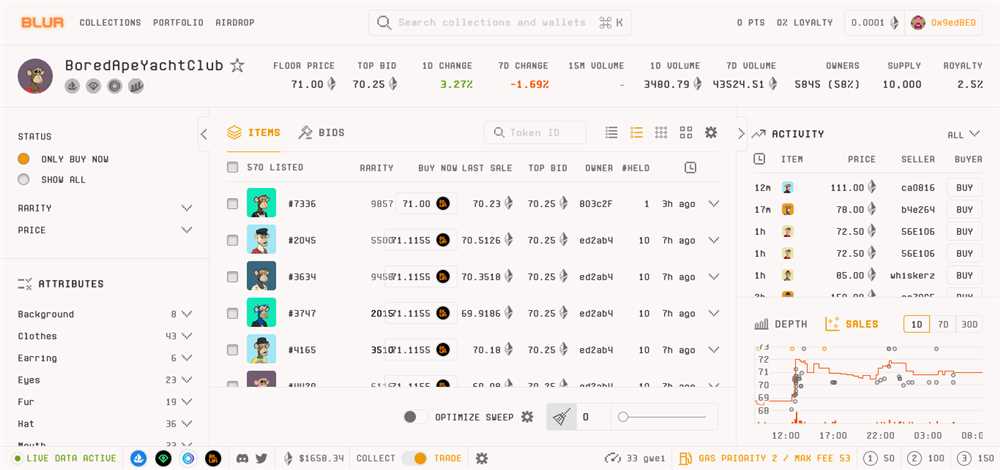
When it comes to setting competitive prices in a blur marketplace, it is crucial to consider various factors that can impact your positioning and ultimately lead to marketing success. With intense competition and ever-changing trends, understanding consumer perception and the competitive landscape is essential.
Here are some valuable tips to help you navigate the challenging terrain of setting the right price for your product or service:
1. Conduct thorough market research:
Before setting your prices, it is vital to conduct comprehensive market research. This involves understanding the demand, analyzing the competition, and assessing the existing pricing strategies in the market. By identifying market segmentation and trends, you can fine-tune your pricing approach.
2. Position your brand:
A strong brand can command higher prices and differentiate itself from competitors. Focus on building a brand that resonates with your target customers and creates a perception of value. Emphasize the unique features, quality, and benefits of your product or service to justify your pricing strategy.
3. Consider cost and profit margins:
While it is important to remain competitive, it is also crucial to assess your costs and profit margins. Ensure that your pricing covers your expenses and allows for a reasonable profit. Avoid setting prices too low as it may negatively impact your business sustainability.
4. Stay updated with market trends:
Market trends can change rapidly, and it is vital to stay ahead of the curve. Keep a close eye on industry news, customer preferences, and competitor activities. Regularly assess your pricing strategy based on market analysis to remain competitive and meet customer demands.
5. Focus on customer satisfaction:
In a blur marketplace, satisfied customers can become your brand advocates. Focus on delivering quality products or services that exceed customer expectations. By providing exceptional value and addressing customer needs, you can justify your pricing and build a loyal customer base.
6. Implement effective promotions:
Promotions play a crucial role in attracting customers and driving sales. Develop effective promotional strategies that align with your pricing strategy. Whether it’s discounts, bundles, or exclusive offers, promotions can help create a sense of urgency and increase customer engagement.
Remember, in a blur marketplace, a well-defined pricing strategy can give you a competitive edge. By effectively differentiating your brand, understanding customer perceptions, and balancing costs and profit margins, you can set prices that maximize profitability while satisfying customer demands.
Understanding customer demand

In a blur marketplace, understanding customer demand is crucial for setting competitive prices. It allows businesses to position themselves effectively, satisfy customer needs, and stay ahead of the competition.
Market Research and Customer Segmentation
Conducting market research and segmenting customers based on their needs and preferences is essential. This allows businesses to gain insights into customer demand and tailor their pricing strategies accordingly. By understanding the different segments within the market, businesses can identify which segments value their products or services the most, and price accordingly.
Customer Satisfaction and Quality

Customer satisfaction is directly linked to pricing. Customers want value for their money, and this includes both the quality of the product or service and the price they pay. Therefore, it is important to ensure that the pricing strategy aligns with the perceived value by your customers. Offering high-quality products or services at competitive prices can lead to customer satisfaction and repeat business.
Additionally, customer satisfaction can be further enhanced by offering promotions, discounts, or loyalty rewards. This not only strengthens the relationship with existing customers but also attracts new customers who are price-sensitive.
Competition and Differentiation

Understanding the competitive landscape is crucial for setting competitive prices. Analyze your competitors’ pricing strategies, products, and marketing efforts. This will help you identify any gaps in the market or areas where you can differentiate yourself.
Differentiation can come from various factors such as unique features, superior quality, exceptional customer service, or a strong brand. By focusing on what sets you apart from the competition, you can justify higher prices or provide added value to your customers.
Trends, Costs, and Margins

Monitoring market trends and keeping track of costs is vital for setting competitive prices. Market trends can affect the demand for your products or services, and adjusting your prices accordingly can help you stay ahead of the competition.
Costs play a significant role in determining pricing as well. Understanding the costs associated with producing, marketing, and distributing your products or services is crucial for setting profitable prices. It’s important to consider not only the direct costs but also indirect costs, such as overhead expenses, when calculating margins.
Perception and Marketing Strategy
Perception plays a crucial role in customer demand and pricing. How customers perceive your brand, product, or service can influence their willingness to pay. Therefore, it is essential to have a strong marketing strategy that effectively communicates the value of your offerings.
Marketing efforts should focus on highlighting the unique selling points and benefits of your products or services. This can be achieved through effective advertising, branding, and communication strategies. By shaping the perception of your offerings, you can influence customer demand and justify your pricing strategy.
In conclusion, understanding customer demand is vital for setting competitive prices in a blur marketplace. By conducting market research, segmenting customers, ensuring customer satisfaction, analyzing competition, monitoring trends and costs, and shaping perceptions through marketing strategies, businesses can develop effective pricing strategies that align with customer needs.
Researching market trends

To set competitive prices in a blur marketplace, it is essential to stay up to date with the latest market trends. Researching market trends helps you understand the segmentation and demand for your product or service in the market. By analyzing market trends, you can position your brand strategically, optimize pricing, and ensure maximum profit and customer satisfaction.
Understanding market segmentation

Market segmentation involves dividing the market into distinct groups based on various factors such as demographics, behavior, and preferences. By understanding market segmentation, you can target specific customer groups and tailor your pricing strategy accordingly.
Conducting market research

Market research plays a crucial role in setting competitive prices. It helps you gather valuable insights about your target market, competition, and customers. By conducting market research, you can identify the supply and demand dynamics, analyze competitor pricing strategies, and uncover any gaps or opportunities in the market.
Market research also helps you assess customer perception, quality, and value expectations. By understanding customer preferences and expectations, you can develop pricing strategies that align with their needs and deliver maximum value.
Furthermore, market research enables you to analyze the costs associated with your product or service. By understanding your costs, you can set prices that not only cover your expenses but also provide sufficient margins for profitability.
Monitoring market trends
Market trends are constantly evolving, and it is vital to monitor them regularly. By staying updated with the latest trends, you can spot emerging competition, identify new customer preferences, and adapt your pricing strategy accordingly.
Monitoring market trends also helps you identify opportunities for product differentiation and positioning. By understanding the competitive landscape, you can highlight your unique selling points and promote them effectively to attract customers.
Additionally, market trend analysis enables you to assess the effectiveness of your pricing strategy over time. By comparing your prices with the competition and evaluating customer satisfaction, you can make necessary adjustments to optimize your pricing strategy and stay competitive in the marketplace.
In conclusion, researching market trends is essential for setting competitive prices in a blur marketplace. It provides valuable insights about market segmentation, competition, customer preferences, and costs. By leveraging this information, you can develop an effective pricing strategy that maximizes profit, customer satisfaction, and market positioning.